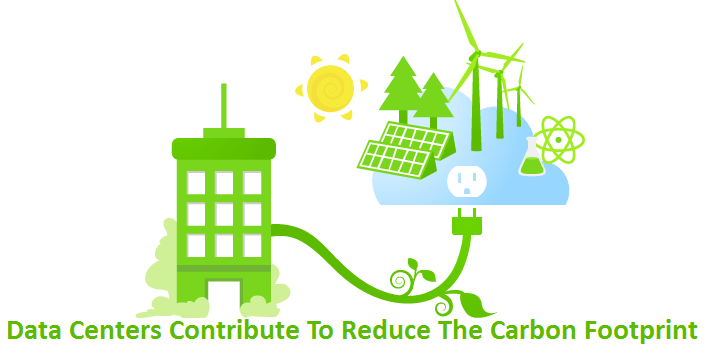Data Centers Contribute To Reduce The Carbon Footprint
 It is now fashionable to point the finger at data centers as part of their energy consumption. But it’s a bit soon to forget that they are solid tools for reducing the carbon footprint! Digital technology has changed our habits and reduced our environmental impact: a few clicks are enough now to book train tickets, without the need to move. But beyond this (r) evolution, data centers themselves also contribute significantly to reduce the carbon footprint.
It is now fashionable to point the finger at data centers as part of their energy consumption. But it’s a bit soon to forget that they are solid tools for reducing the carbon footprint! Digital technology has changed our habits and reduced our environmental impact: a few clicks are enough now to book train tickets, without the need to move. But beyond this (r) evolution, data centers themselves also contribute significantly to reduce the carbon footprint.
1 kilowatt consumed in the biggest data center is 10 kW would be consumed if it does not exist!
Imagine 300 companies each with their own infrastructure: 300 inverters, 300 air conditioners, generators … In comparison, a data center can accommodate 300 guests, is equipped with fifteen inverters shared! And this equation is repeated for each device. Infrastructure sharing gives the title to the data center a virtuous impact on the carbon footprint of companies.
This is not an end in itself. Many innovations can still contribute to reducing the energy impact of data centers. The news shows us regularly that many projects exist to optimize or reduce the energy consumption of data centers ( server cooling oil bath, use of the heat generated by the servers to heat installations communities or businesses proximity, test fuel cell , etc.). initiatives that will ultimately optimize the energy produced and consumed by them. But it takes to much stick to it? Being “responsible”, is it limited to reduce its own energy bill? Or is it to go beyond its own interests?
Research funding, use of ecological materials (cables without PVC , banning of chemical additives in air conditioning systems, etc..), design of the building to prevent any discharge of liquid effluent in urban networks, construction of the center under construction green label, subscribe to + Balance Certificates of EDF, the use of “electronic nose” analyzing chemical particles in the air to maximize the direct input of outside air as a means of air conditioning, etc.. are all measures that contribute to reducing the environmental impact of our business. While these initiatives have a significant cost, but be “responsible” is also investing in future generations. And experience shows that a company can now be perfectly profitable while leading a highly political “responsibility”. Therefore, it is essential that manufacturers who engage in this virtuous path are recognized for their efforts.
But again, we should have a tool to measure the energy performance. The PUE (Power Usage Effectiveness) is so far the benchmark for data centers – which in addition to the overall energy performance of the site that reflects the improvement or deterioration of performance of the latter as well as the savings generated by technical investments. However, today it shows its limits:
- Operators declare PUE targets rather than PUE numbers;
- The evolution of the life cycle of the data center is not taken into account, as well as its geographical location ( hot vs cold areas) or level of service continuity (or tiering) .
All factors that qualify the relevance of this single performance indicator. This does not mean that we should dismiss definitively, but it cannot be the only measure for energy performance of data centers. Latest indicator, CUE ( Carbon Usage Effectiveness ) has the advantage of measuring the carbon footprint of a data center (dividing emissions CO2 by power consumption equipment IT it hosts, on an annual basis).
Investing in innovation! More than ever, this must be the leitmotif of data center operators wishing to plan for a sustainable future.
Resources:
- https://www.esds.co.in/dc-infrastructure.php
- https://www.esds.co.in/emagic.php
- https://www.esds.co.in/backup-and-recovery.php
- How Cloud Computing Is Changing The Labor Market - March 25, 2015
- Adopting Infrastructure as a Service Can be a Good Deal - March 17, 2015
- Will Virtualize? Take These Six Points Into Consideration - March 12, 2015
